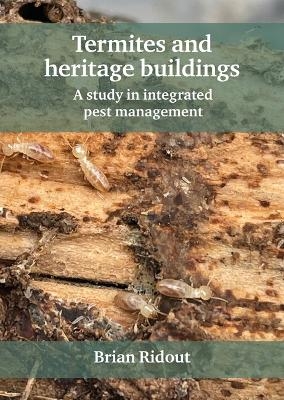
Termites and heritage buildings
A study in integrated pest management
Seiten
2023
Historic England (Verlag)
978-1-80207-839-8 (ISBN)
Historic England (Verlag)
978-1-80207-839-8 (ISBN)
The last overview of termites for the non-specialist was published several decades ago and in the intervening years, both knowledge, and the termites themselves have moved on. A 27-year eradication effort for one termite infestation in Devon has shown that UK structures are becoming vulnerable as the climate changes and also that extermination of a colony can be difficult even when there are no other termites waiting to invade.
Heritage buildings often present even more problems. Survey work and treatments may be complicated by structural and material complexity overlain with a requirement to retain as much undisturbed and original fabric as possible. There will be concealed cavities not inspected, and inserted barriers, both chemical and physical, will inevitably be incomplete.
This study discusses the modifiable environmental parameters that govern termite activity and offers a resume of the baits and chemical treatments that have been developed so that the most appropriate can be selected where necessary. It is primarily intended for those involved in conservation, both in the UK and elsewhere, who commonly have limited resources. It is hoped that it will also be of use to architects, surveyors and others with an interest in Heritage structures.
Heritage buildings often present even more problems. Survey work and treatments may be complicated by structural and material complexity overlain with a requirement to retain as much undisturbed and original fabric as possible. There will be concealed cavities not inspected, and inserted barriers, both chemical and physical, will inevitably be incomplete.
This study discusses the modifiable environmental parameters that govern termite activity and offers a resume of the baits and chemical treatments that have been developed so that the most appropriate can be selected where necessary. It is primarily intended for those involved in conservation, both in the UK and elsewhere, who commonly have limited resources. It is hoped that it will also be of use to architects, surveyors and others with an interest in Heritage structures.
Dr Brian Ridout was a Senior Architectural Conservator at English Heritage until his retirement a few years ago. He is a biologist and building scientist who has worked for many years as an international expert on timber decay and damp problems.
| Erscheinungsdatum | 03.04.2023 |
|---|---|
| Zusatzinfo | 20 Illustrations, color; 104 Illustrations, black and white |
| Sprache | englisch |
| Maße | 189 x 246 mm |
| Themenwelt | Technik ► Bauwesen |
| Weitere Fachgebiete ► Land- / Forstwirtschaft / Fischerei | |
| ISBN-10 | 1-80207-839-8 / 1802078398 |
| ISBN-13 | 978-1-80207-839-8 / 9781802078398 |
| Zustand | Neuware |
| Haben Sie eine Frage zum Produkt? |
Mehr entdecken
aus dem Bereich
aus dem Bereich
Grundlagen und Vorgehensweisen
Buch | Softcover (2021)
Springer Fachmedien Wiesbaden GmbH (Verlag)
CHF 53,15
Bemessung von Stahlbauten nach Eurocode mit zahlreichen Beispielen
Buch | Hardcover (2024)
Springer Vieweg (Verlag)
CHF 83,95
Kommentar zu VOB/C ATV DIN 18340, ATV DIN 18299
Buch | Softcover (2024)
DIN Media (Verlag)
CHF 96,55


